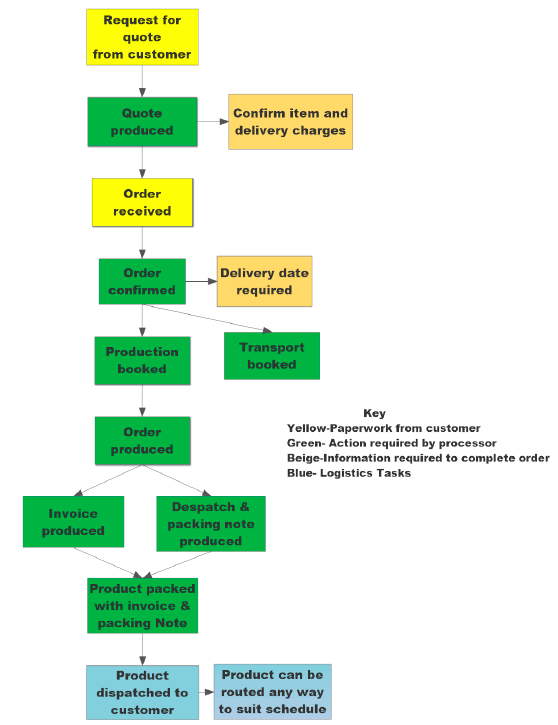Red meat exports: potential administrative costs of trade under WTO rules
This research investigated what the costs will be incurred by Scotland’s red meat export sector when dealing with the EU under World Trade Organisation regulations.
2. Supply Chain to the EU – Current
2.1 Adminstration and Processes
Within the EU Customs Union, all member states enjoy free movement of goods amongst each other. There are no customs checks, unless national controls are necessary to manage a public health risk. The result is that exports of red meat from Scotland into the EU (including Switzerland, Liechtenstein, Norway and Iceland) are straightforward. From a Scottish perspective, red meat exports cover cattle, sheep, pigs, 5th quarter and germplasm (breeding livestock, semen and embryos) products.
When a processor receives an order from a customer based in the EU, the process is uncomplicated and the order can be fulfilled relatively quickly (next day delivery is common). Some processors will export a full container lorry load of meat, whilst others will use a haulier, who will consolidate several orders to either one, or multi-locations, which is termed groupage. There are relatively few transport companies in Scotland shipping red meat to Europe, however, and margins are slim. Several processing businesses will use their own lorries.
Products for human consumption can be transported within the EU without an Export Health Certificate (EHC), but they must be accompanied by a Commercial Document. This should include details of the contents of the consignment, the consignor and consignee. Companies may use an invoice, as long as the required information is on it. (see example at Appendix 3)
The same process is used for Animal Bi-Products (ABiP). Some shipments of ABiPs must be authorised by the competent authority in the destination country, however, before they can be transported to the customer.
A summary of the current order and purchasing process is shown in the diagram overleaf.
Figure 1: Order and Purchasing Process – Current

2.2 Non-EU Countries – Current WTO Third Country to EU Deals
Existing WTO third country operators deal with the EU as follows:
2.2.1 New Zealand
New Zealand is a key lamb exporter to the EU and has an agreed quota. In recent years it has not been utilising its full quota, as other markets have become more financially attractive.
Due to the seasonality of the lamb sector, New Zealand exporters have 6-month supply contracts with their European customers. Their lamb is processed and vacuum-packed for sea shipment to Europe, spending 7 weeks on the water.
The Quota Certificate, which accompanies the consignment, confirms the origin of the product and is issued at the time of production. It is cross-referenced with the exporter’s quota allocation, to ensure that quota is not exceeded. New Zealand has a veterinary agreement with the EU, whereby 2% of product arriving will be randomly checked.
2.2.2 USA
The EU is a relatively small export market for the US, however ongoing trade negotiations between the two countries and the proposed UK/USA trade discussions may see this change in the future. For US beef, access to the EU is mainly through the High-Quality Beef Quota (also known as the Hilton quota). The US Department of Agriculture (USDA) Food Safety and Inspection Service (FSIS) is the public health agency responsible for ensuring the safety of meat and other animal-based food products and it administers the Export Health Certificates.
Red meat is exported by refrigerated sea container as vacuum packed sub-primal, primal, and trimmings, with some retail-ready product, though this is a small volume. There are no seasonal variations, as most shipments arrive in the EU at the beginning of each quota quarter.
US Exporters must have the relevant commercial documents, including the Bill of Lading, Export Health Certificate and quota Certificate of Authenticity (COA) for shipments. The FSIS inspection occurs either at the meat plant or at the cold store before leaving for the port. A customs inspection may occur if a random check is flagged for that specific container.
The inspections on arrival at the key destinations in Europe – Netherlands, Germany, UK and Belgium – vary, depending on the BIP. Should a shipment be rejected on arrival, the most common reason relates to issues with the EHC documentation. The product will either be destroyed or sent back to the US.
Some of the bigger issues to face US exporters to the EU are the rapid subscription of the zero-duty quota by other countries meaning the quota is quickly used up as well as the different interpretations between different BIPs when clearing product. The sanitary and phytosanitary requirements are also seen as a barrier to trade.
Contact
Email: socialresearch@gov.scot
There is a problem
Thanks for your feedback